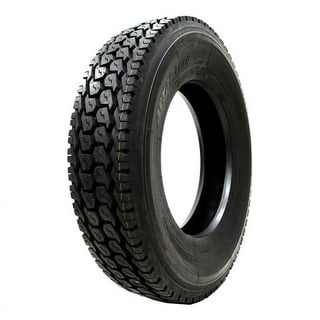Professional Morris Tire and Alignment: Boost Your Automobile's Performance
Professional Morris Tire and Alignment: Boost Your Automobile's Performance
Blog Article
Tire Solution: The Impact of Climate Condition
When it involves making certain ideal efficiency and security when traveling, recognizing the impact of climate condition on tire solution is vital. From scorching warmth to icy roads, each weather condition aspect can significantly affect tire capability and total driving experience. By diving into the results of differing climate condition on tires, motorists can gain important insights that may improve their automobile's performance and longevity. In this discussion, we will check out the detailed partnership in between weather and tire solution, losing light on the relevance of weather-specific tire maintenance methods and factors to consider.
Warm and Tire Efficiency
When subjected to heats, tires experience changes in performance that can dramatically impact lorry safety and handling. The heat created from prolonged driving or warm weather problems triggers the tire rubber to soften, bring about decreased tread life and enhanced wear. As the rubber ends up being softer, the tire's grip when traveling diminishes, impacting stopping distances and total traction. In severe instances, too much warmth can also create tire blowouts, posing a serious security risk to the lorry and its owners.
Moreover, high temperature levels can speed up the process of tire aging, creating the rubber to weaken a lot more swiftly. To mitigate the impacts of warm on tire efficiency, vehicle drivers must consistently check their tire pressure, revolve tires to ensure even wear, and evaluate for any indications of damages.
Winter Results
Winter problems can have a considerable effect on tire performance and safety. As temperature levels decline, tire rubber can solidify, causing lowered traction on icy or snow-covered roadways. In winter, tires may also lose atmospheric pressure extra rapidly, which can influence handling and gas effectiveness. Furthermore, chilly temperature levels can cause tire sidewalls to tense, raising the threat of damages from pits or various other road hazards.
To reduce the effects of winter on tires, it is essential to regularly check tire pressure and inflate them to the manufacturer's recommended degrees. Using winter or all-season tires developed for cool weather condition problems can also boost grip and grasp on icy or snowy roads - discount tires morris il. Correct tire maintenance, consisting of normal assessments for wear and damage, ends up being also a lot more critical throughout chillier months to guarantee optimal performance and safety
Rainy Conditions Effect
Tires with damaged treads are more prone to hydroplaning, where a layer of water constructs up between the tire and the road surface, leading to loss of traction. To battle this, motorists should on a regular basis inspect their tires for sufficient walk depth and consider investing in tires specifically designed for damp problems.

Snow and Tire Safety
Snow-covered roadways pose distinct obstacles for motorists, highlighting the relevance of proper tire selection and maintenance. When driving in snowy problems, having the right tires can make a considerable distinction in safety and security and efficiency. Winter tires are created with unique rubber substances and tread patterns to supply better grip on snow and ice contrasted to all-season tires. The much deeper footsteps and sipes of winter season tires assist grasp the roadway much better, decreasing the risk of slipping and moving.
In enhancement to using winter season tires, it is crucial to ensure they are correctly blown up. Winter can cause tire pressure to drop, impacting grip and handling (tire shop morris). On a regular basis checking and keeping the proper tire pressure is important for ideal efficiency in snowy conditions

Weather-Related Tire Maintenance
When confronted with numerous weather problems, correct tire maintenance ends up being an important aspect of vehicle security and efficiency. Weather-related tire upkeep includes a variety of methods focused on making certain optimal tire function and durability in various weather circumstances. One essential element of weather-related tire maintenance is tire pressure policy. Varying temperature levels can create tire stress to differ, influencing traction and fuel effectiveness. On a regular basis inspecting and adjusting tire pressure according to supplier referrals is essential for safe check out this site driving in altering climate condition. In addition, tire tread deepness plays a substantial role in dealing with different weather condition aspects. Tires with sufficient step depth provide better hold on wet or icy roadways, decreasing the threat of skidding or hydroplaning. Evaluating tire tread routinely and replacing tires when step wear reaches a certain deepness is important for preserving grip and security in damaging weather. By prioritizing weather-related tire upkeep, chauffeurs can enhance safety and security, boost lorry efficiency, and prolong the lifespan of their tires.
Final Thought
In verdict, climate conditions have a significant effect on tire efficiency and security (mopar tire service specials). From warm impacting tire pressure and use to cold climate minimizing traction, it is important to take into consideration the climate when maintaining and using tires.
In this discussion, we will certainly explore the complex partnership in between weather problems and tire service, dropping light on the significance of weather-specific tire upkeep practices and considerations.

Report this page